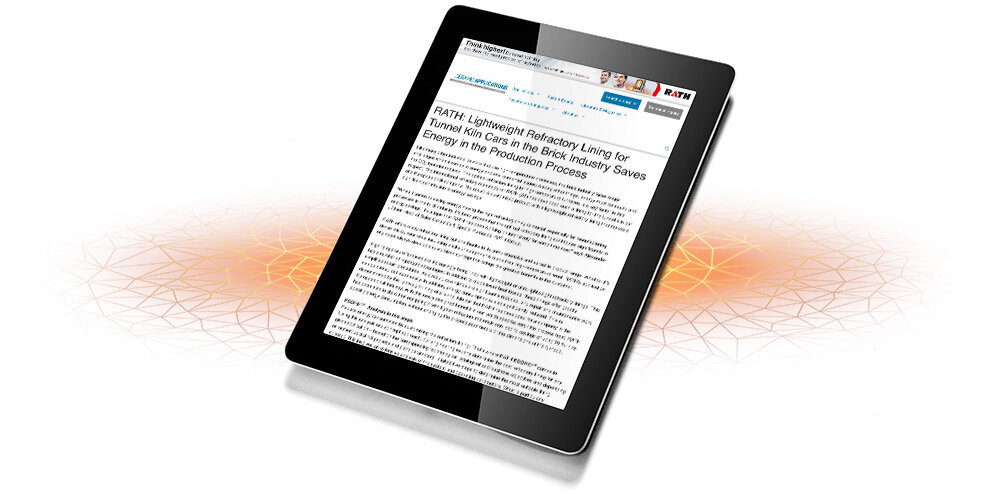RATH: Lightweight refractory lining for tunnel kiln cars in the brick industry saves energy in the production process

Vienna, June 7, 2024
“When it comes to saving energy, having the right refractory lining is crucial, especially for manufacturing processes in the brick industry. It’s been proven that the optimal refractory lining contributes significantly to energy savings. It's a topic that RATH has been working on intensively for some time now," says Alexander Jüttner, Head of Sales Ceramics & Special Furnaces, RATH Group.
RATH offers many refractory lining options thanks to its comprehensive and versatile product range. Whether it’s dense bricks, concretes, insulating bricks or components made from high-temperature wool, RATH’s application engineers always develop a customized concept that brings the greatest benefits to the customer.
High-temperature furnaces are increasingly being lined with lightweight or ultra-lightweight refractory linings. This has a number of important advantages: In addition to much lower heat losses, these linings offer greatly simplified repair procedures. As a result, downtimes are significantly reduced, and repair and maintenance work can be carried out more easily. In addition, energy consumption is also significantly reduced. This is demonstrated by the lightweight lining of a tunnel kiln car that RATH has developed for a company in the European brick industry. With this newly designed tunnel kiln car, which absorbs very little process heat, RATH has been able to show that equipping it with lighter refractory materials can lead to savings of up to 70 % in its specific energy consumption, without changing the process parameters or the dimensions of the furnace
ECOREF®: Analysis in five steps
Reduce energy consumption by customizing the refractory lining: That's where RATH ECOREF® comes in. Using this analysis and concept approach, our engineering experts determine the best refractory lining for any given application – based on the corresponding technological, ecological and business objectives and depending on numerous distinct process and plant parameters. It takes five steps to determine the most suitable lining concept. This involves an extensive analysis of the system and operating parameters. What is particularly relevant is whether a system is operated periodically or continuously, how often the system is used and what its dimensions, operating temperature and temperature profile are. The operating process that is carried out with the system, which materials are heated and the atmosphere in which this takes place are also taken into account. The result of the analysis: concrete savings potentials, defined in kilowatt hours. "Energy savings are always due to an interaction of many factors. RATH ECOREF® can make a significant contribution to achieving a good overall result here," summarizes Alexander Jüttner.
The expert for refractory linings in the ceramics industry
For more than 130 years, RATH has been producing outstanding refractory linings for industrial high-temperature applications – including the ceramics industry. In this industry, too, RATH is not only a full-range supplier of refractory products, but has comprehensive engineering and consulting expertise and offers worldwide project management for industrial furnace projects. Whether chamber furnace, bogie hearth furnace, pusher plate furnace, roller furnace, tunnel or bell-type furnace – RATH covers the complete spectrum when it comes to ceramic furnace systems.
